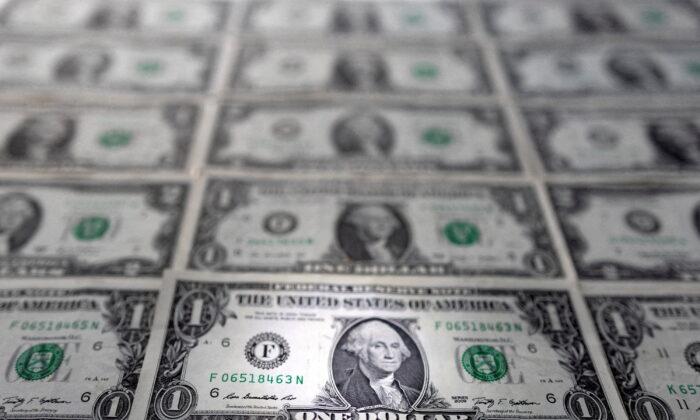LONDON—Gathering gloom about prospects for the global economy lifted the safe-haven dollar on Friday and pressured risk-sensitive currencies, with the Australian dollar tumbling to a two-year low.
Rampant inflation and a rush by central banks to raise rates and stem the flow of cheap money has fuelled sell-offs across markets and lifted assets seen as safer bets.
Fresh data on Friday showed eurozone inflation hit another record high in June, while separate statistics showed manufacturing production in the bloc fell for the first time in two years.
The dollar index—which tracks the greenback against six counterparts—is on track for a nearly 1 percent weekly gain, and was last up a quarter of a percent on the day at 105.020.
“It’s a risk-off start to the second half of the year with equities and commodities down, so the dollar is stronger pretty much across the board,” said Kenneth Broux, an FX strategist at Societe Generale in London. “The Fed is committed to bring inflation under control but can it deliver a soft landing?”
The U.S. Federal Reserve has lifted rates by 150 basis points since March, with half of that coming last month in the central bank’s biggest hike since 1994. The market is betting on another of the same magnitude at the end of this month.
The odds were extremely low that the United States would slide into recession without dragging the rest of the world with it, RBC Capital Markets strategists said in a note.
More risk-sensitive currencies fell across the board. The Australian dollar and New Zealand dollar both fell by more than 1 percent on the day, with the Aussie falling by as much as 1.6 percent to $0.67905, its lowest since June 2020.
The Reserve Bank of Australia decides policy on Thursday, and markets expect a half point hike to its key rate. But that has not helped the Aussie much, which has instead tracked commodity prices lower as the global economic outlook deteriorates.
Sterling fell as much as 0.8 percent to $1.20770, a day after official data showed a record shortfall in Britain’s current account deficit in early 2022.
The euro slipped by as much as 0.5 percent to $1.04330. It was last down 0.3 percent at $1.04545.
The European Central Bank is expected to raise interest rates this month for the first time in a decade, although economists are divided on the size of any hike.
The Japanese yen gained as much as 0.75 percent on the day, pulling away from a mid-week low of 137.00—its weakest in 24 years. It was last up a quarter of a percent at 135.415 yen per dollar.
In cryptocurrencies, Bitcoin resumed its slide lower, slipping 2 percent to trade just above $19,000.





